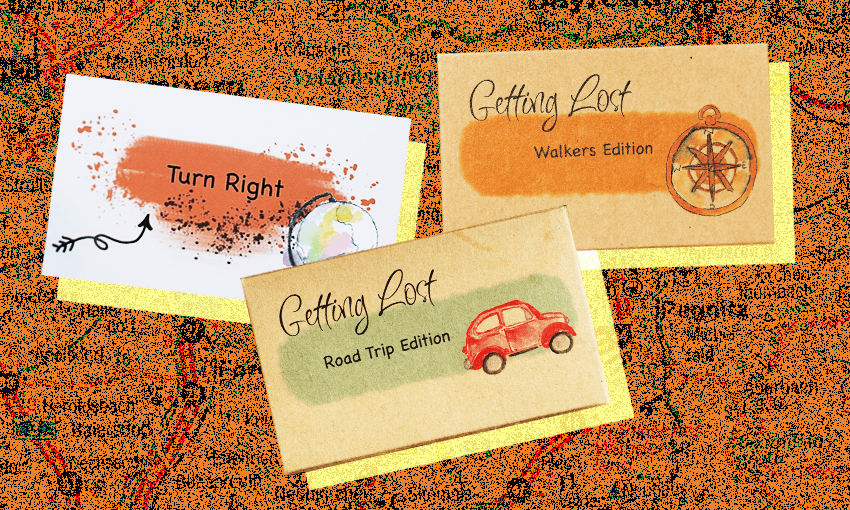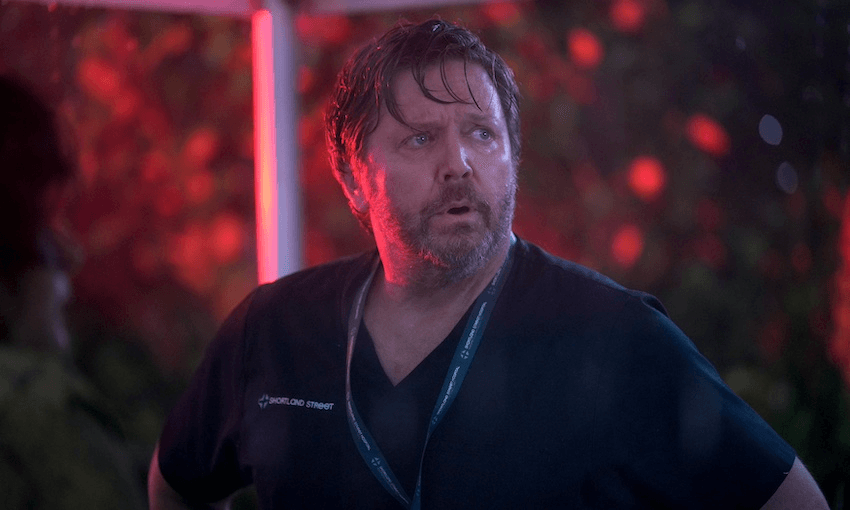Getting Lost is being played all over the world – and not always in the way its creator envisioned.
Cat Macnaughtan is used to hearing from her fans. They write her messages, send her ideas and share photos of themselves. Often, those snaps are taken in far-flung places. “The photo that I typically get is a bunch of middle-aged women dressed horrendously in op shop clothes in the middle of nowhere on a slide,” she says.
She loves getting those snaps of people in random places, because she sent them there. Thanks to Macnaughtan’s popular card game Getting Lost, tens of thousands of people have taken her advice to “Take the next left,” “Follow a white car,” and, “Head to the highest place you can see.” Users shuffle the deck, draw cards at random and let fate determine their next move.
People follow the prompts on her cards when walking, cycling and driving to have an adventure they wouldn’t otherwise have. Some use them to entertain the kids on a lazy Saturday afternoon. Others pop in a marriage card to help them decide where and when to propose.
“We live a very pre-ordained life. We’re driven by algorithms no matter where we go. Not having a plan does freak some people out,” says Macnaughtan. “This game will never be for them.”
Instead, Macnaughton’s typical players are mums, kids and families who want to embark on a cheap and cheerful trip. Her card games offer impromptu opportunities to go off the beaten track and discover parts of the world players haven’t yet been before. Sometimes, it’s a dusty, overgrown street. Other times, it’s a secluded beach with dolphins playing in the surf.
It takes the destination out of the equation, she says. “Let’s make the journey, and the path, the fun part.” It also harks back to a childhood instinct to explore. “When we were kids we made up crazy games that led us to crazy places, because we wanted to explore, we wanted to adventure. Somewhere, we’ve lost that.”
Getting lost, safely, is entirely the point. Her game, Macnaughtan says, is the antidote for those who are sick of, or don’t want to follow, the typical travel trends and visit the Instagram-famous spots. “There’s a time and a place for TripAdvisor and for Google,” she says. “This allows you to follow directions but be out of control.”
Sometimes, like the family who found a giant restaurant-sized KFC bucket in the middle of a random field, the places her fans end up aren’t so glamorous. Other times, like a sunset proposal on a grassy hill, they’re gloriously impromptu. Macnaughtan loves hearing about the strange places her fans end up. “It’s play, it’s adventure, it’s fun,” she says. “We’ve had 30 proposals. It’s not Instagram-perfect, but it’s flippin’ epic.”
Recently, Macnaughton’s card game ticked over 100,000 sales (packs of cards cost between $17.95-$25.95 and feature local scenery on the back.) She’s running her $1 million business from her kitchen table with two part-time staff on board to help out. This week, she left full-time employment as a strategist to focus on Getting Lost full-time.
Macnaughtan’s kept as firm a grip on her business as she can, tracking growth and choosing opportunities carefully. She’s in 200 New Zealand stores and a recent expansion to Australia has paid off, becoming her biggest market.
When the American chain store Kohls called her, she thought long and hard about the offer, then turned it down. “It was horrendous timing, [we were] so not ready,” she says. “It would have been the death of our business had it gone ahead … there’s no way we could have powered up to do that.”
But some things remain out of her control. Recently, she noticed an escalation of orders coming from America. She doesn’t promote Getting Lost or advertise there, but occasionally Getting Lost’s posts go viral. Sitting in a cafe, she jumped online to see what was happening. “We had all these posts, people tagging people and saying, ‘Let’s get stoned and play this’.”
Her game had been discovered by American teens who wanted to smoke weed and get lost. Wary of what could go wrong in such a litigious country, she began to freak out. “We have a whole bunch of young people in America getting stoned and playing our games. Are they driving into lakes? Are they driving off cliffs? What are they doing?”
Some even messaged her directly. “People were like, ‘Can you make a ‘Getting Stoned’ edition?’ I’m like, ‘We absolutely cannot.'”
Macnaughtan started Getting Lost after an audience built around her 2014 travel blog, which detailed her family’s adventures finding hidden, undiscovered places. On weekend’s they’d climb over fences, climb down cliffs and find secluded, unheralded spots, then photograph and write about them.
One day, a reader asked if she knew any good spots to visit in Waiouru. She’d just moved there with her husband and children and wanted more options than just the Army Museum. “There is nothing that Google can tell you. TripAdvisor is probably going to be the … local dairy and maybe a local cafe. It’s not going to tell you anything,” she says.
But it put a thought in the back of Macnaughtan’s mind. She didn’t know Waiouru well, but based on her own adventures, she knew it must be full of possibility. “Instinctively, I knew there must be watering holes, there must be a hill you can roll down with a field of wildflowers, there must be so many amazing places,” she says. “I can’t tell you. No one can tell you. But you need a mechanism to be able to confidently explore and discover them.”
She wrote up some directions, found a printer, cut up some cards and a game was born. Now, Getting Lost has fans all over the country and around the world. People take her cards with them when they travel to help them explore more than just the usual tourist spots. There are around 30 different editions now, for road trips, date nights, camping, walking the dog, heading into the bush and office parties. During lockdowns, she made an at-home edition.
She could move it all onto an app, and it is something she tried. But a developer took her money and never did the job, and she took it as a sign. Getting Lost isn’t about staring at a phone screen. It’s about a real-world experience, prompted by her cards. She’s worried an app would corrupt that. “We’re telling people to go left, go right, turn down this road, do that … you could really easily lead someone into danger if someone hacked into your app.”
She’s got more than enough ideas for new packs to keep her busy. While ‘Getting Stoned,’ won’t be one of them, Macnaughtan is finding that Getting Lost’s growth is impacting on her own adventuring. She’s struggling to find time to get lost herself. “I don’t have time to sleep,” she says, “let alone adventure that much.”



